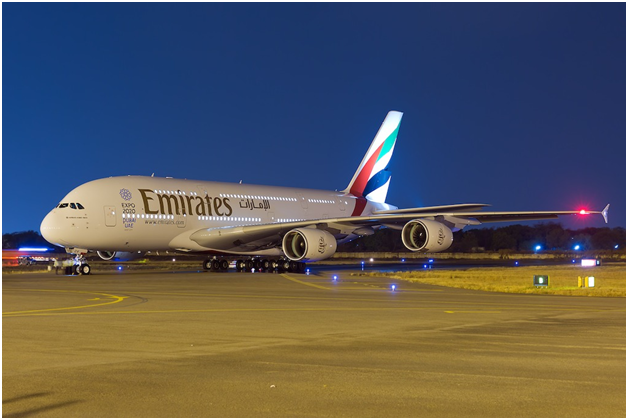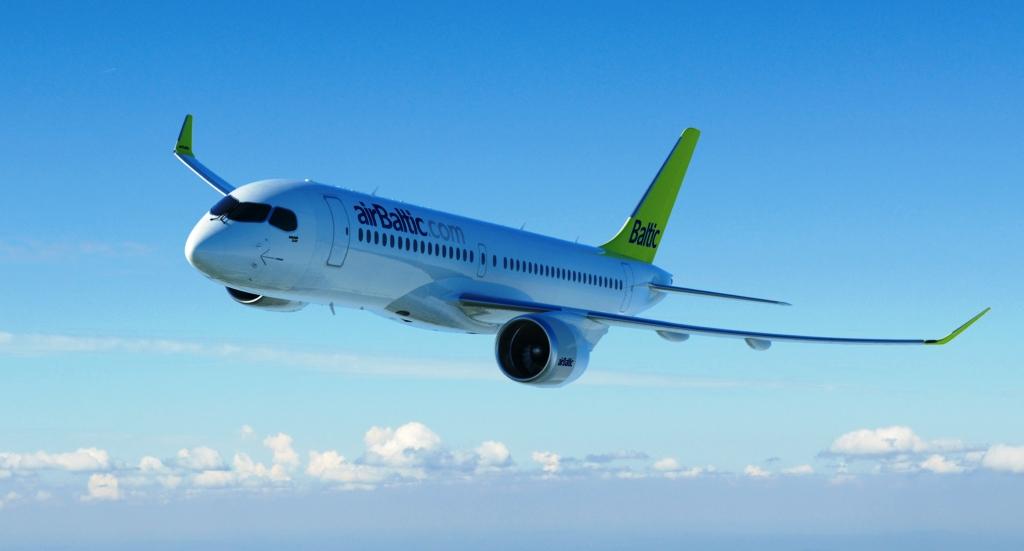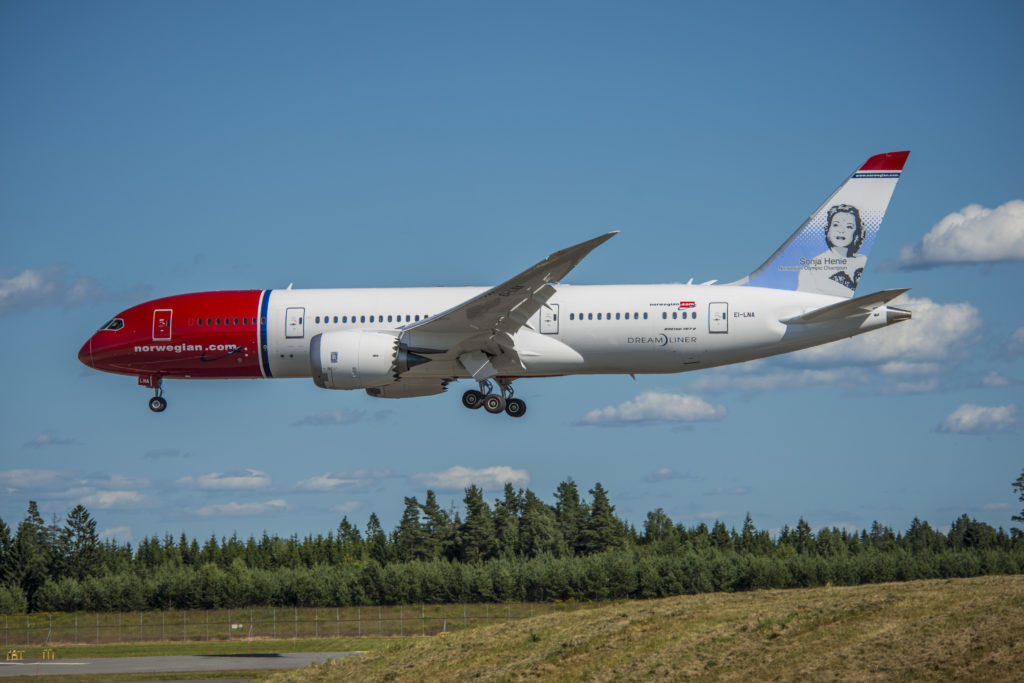Leeham News and Analysis
There's more to real news than a news release.
Leeham News and Analysis
- At long last, Boeing appears near certification and EIS for 777X
- Air India Flight 171 Preliminary Crash Report Is Unclear Regarding Pilot Actions
- Bjorn’s Corner: Air Transport’s route to 2050. Part 30.
- It’s official: MTU’s engine leader named CEO of Airbus Commercial from Jan. 1; future of Open Fan and A220-500 shifts to him
- Embraer E2: Where will the orders come from?
CSeries trans-Atlantic capability
By Bjorn Fehrm
Subscription Required
Introduction
February 23, 2017, © Leeham Co.: We previously described how new generation engines make the Boeing 737 MAX 8 a trans-Atlantic aircraft. The MAX 8 is smaller than the Airbus A321LR, but not the smallest single-aisle with trans-Atlantic capability. This distinction goes to the Bombardier CSeries.
We wrote about the CS100 capability to cross the Atlantic from London City Airport last year. After the article, we received new and improved data from Bombardier. The CS100 can now fly directly to US East Coast on the difficult westward leg with a business cabin of 42 seats. The updated article is here.
When we look at the improved capabilities of the CS300 (announced at Farnborough Air show last summer), this aircraft can also cross the Atlantic with a full cabin of 130 passengers.
Bombardier arranged so we could discuss this deeper with the VP CSeries program, Rob Dewar.
Summary:
- We use our aircraft performance model to compare the CS300’s suitability for long-haul to the Airbus and Boeing competition.
- The aircraft have similar range and seat mile costs. The smaller aircraft have lower trip costs.
- With Rob Dewar, we explored the potential for additional capability for the CS300.
Posted on February 23, 2017 by Bjorn Fehrm
Brazil files WTO complaint against Canada-CSeries deals
 Feb. 8, 2017: Brazil, on behalf of Embraer, filed a complaint with the World Trade Organization over Canadian government investment in Bombardier’s CSeries.
Feb. 8, 2017: Brazil, on behalf of Embraer, filed a complaint with the World Trade Organization over Canadian government investment in Bombardier’s CSeries.
“Brazil notified the WTO Secretariat that it had requested WTO dispute consultations with Canada regarding alleged subsidies provided to Canadian aircraft manufacturer Bombardier,” the WTO announced today. Coincidentally, today it was also revealed the federal government will provide C$372m in loans to Bombardier. Most will go toward the Global 7000 corporate jet program but some will go to the CSeries, which competes with Embraer’s EJets.
Posted on February 8, 2017 by Scott Hamilton
A380, from flagship to LCC mass transport
By Bjorn Fehrm
January 23, 2017, ©. Leeham Co: The Airbus A380 was introduced as the flagship aircraft for an airline’s fleet. Legacy carriers with a large long-haul network introduced the aircraft on the routes with the most traffic in the network. After an initial rush of inductions, only Emirates continued to buy the aircraft in larger numbers. The aircraft had become too large for the airlines which sought frequency over capacity at their hub airports.
Airbus and its leasing partner, Amedeo, are convinced the aircraft will have a second spring when airport congestion has grown in the next decade. Until then, both are seeking the market niches that will keep production at minimum one aircraft per month.

We sat with Amedeo’s CEO, Mark Lapidus, at the Air Finance Journal conference in Dublin to find out what market will require a new or used A380. Lapidus has spent the last two years in meetings with the world’s major airlines, discussing all aspects of operating an A380. He presented some surprises.
Posted on January 24, 2017 by Bjorn Fehrm
Norwegian, others have vision; US airlines don’t
Subscription Required
Introduction
Dec. 5, 2016, © Leeham Co. Last weeks’ approval by the US Department of Transportation of a license for Norwegian Air Shuttle to operate long-haul, low-cost service to and from the US drew immediate fire from labor unions over anticipated US job losses.

Iceland’s Loftleider Airlines, one of the first trans-Atlantic low-cost carriers. Photo via Google images.
But their view is too narrow.
It means more jobs for Boeing and its supply chain, which are also heavily unionized. It means benefits to US exports.
But overlooked is the next evolution in long haul travel that starts next year.
Summary
- Legacy airlines always object to new competition. It doesn’t matter when or from where.
- Open skies and free market is a great concept—until someone actually takes advantage of it.
- The 737 MAX and A321neo present new threats to US airlines.
- Lack of vision and foresight are the US airlines’ own worst enemy.
Posted on December 5, 2016 by Scott Hamilton
Airbus, Airlines, American Airlines, Boeing, Delta Air Lines, Emirates Airlines, Leeham News and Comment, Premium, United Airlines
737-8, 737-800, 737-9, 737-900ER, 767, 787, A321LR, A321NEO, A330, Airbus, American Airlines, Boeing, Delta Air Lines, Icelandair, Laker Airways, Loftleider, SkyTrain, United Airlines
Clouds overhang Bombardier ahead of earnings call
Subscription Required
Introduction
Nov. 9, 2016, © Leeham Co.: Bombardier reports its 3Q2016 and nine month earnings Thursday and as the year prepares to enter its last 45 days, disappointment hangs over the company and the stock.
Summary
- Despite winning firm orders for the CSeries from Air Canada and Delta Air Lines early in the year, no other new orders have been announced.
- Deliveries of the CSeries will only be about half those projected, due to engine delivery delays from Pratt & Whitney.
- The $1bn investment from the federal Canadian government hasn’t been achieved, but an announcement may come as early as next week that an agreement has been reached.
- Boeing revised the design of the 737-7 to sit “right on top of” the CS300.
- Embraer (Brazil) is taking the government bailout of CSeries to the World Trade Organization (WTO) in inquiries, with the USA lending support.
Posted on November 9, 2016 by Scott Hamilton
Airline assets and lessor assets: Bombardier and Embraer
Subscription Required
Part 2. Part 1 may be found here.
Introduction

Bombardier invented the regional jet. Despite some sales these days, the CRJ was eclipsed by the Embraer J-Jet. Bombardier photo.
Oct. 10, 2016, © Leeham Co.: Regional aircraft are much riskier assets for lessors than mainline aircraft.
Until recently, Bombardier and Embraer were the only two regional jet Original Equipment Manufacturers (OEMs).
Today, the Sukhoi SSJ100 and the Mitsubishi MRJ90 join BBD and EMB in this arena.
Summary
- Bombardier’s regional jets CRJ series enjoyed a good life with airlines and lessors, but fell into disfavor as fuel prices spiked.
- BBD’s CSeries was ordered by four lessors, but two of them have question marks.
- Embraer’s E-Jet found good homes with lessors, but some worry about supply-and-demand in the secondary market.
Posted on October 10, 2016 by Scott Hamilton
Airlines, American Airlines, Bombardier, CSeries, Delta Air Lines, Embraer, Mitsubishi, Pratt & Whitney, Premium, Sukhoi, United Airlines, US Airways
American Airlines, Bombardier, C-110, C-130, Continental Airlines, CRJ, CSeries, Delta Air Lines, E-Jet, Embraer, ERJ, GTF, Mitsubishi, MRJ90, Pratt & Whitney, SSJ100, Sukhoi, United Airlines, US Airways
Boeing positioned to narrow market share gap
Subscription Required
Now open to all readers.
Introduction

Market sahre data from February–little has changed since–for sales of the A320neo vs 737 MAX families.
Sept. 22, 2016, © Leeham Co.: Early this year Boeing officials began a new message in pushing back against market data that show Airbus captured about 60% of the single aisle market in the A320neo vs 737 MAX sector.
There’s plenty of time, Boeing said, for the MAX to catch up to the neo. Just look, officials said. Southwest Airlines and Ryanair ordered only a fraction of the MAXes they need to replace the 737s they currently operate.
Airbus, on the other hand, has hundreds more neos ordered by the likes of new airlines such as AirAsia and Indigo.
The implication is that the AirAsia and Indigo orders are not as solid as the potential for Southwest and Ryanair.
It’s a fair point.
But it’s not the whole story.
Summary
- An analysis of airlines that have not ordered the A320neo or 737 MAX families shows Boeing has more upside potential.
- Boeing companies still have thousands of orders yet to be placed.
- Forecasting ahead, Boeing has a solid prospect of narrowing the market share gap with Airbus—but probably not closing it entirely.
Posted on September 22, 2016 by Scott Hamilton
LCC changes face of long-haul
By Bjorn Fehrm
21 September 2016, ©. Leeham Co: Norwegian has announced that it has now flown its three millionth passenger on their long-haul network.
Norwegian first launched low-cost flights from Scandinavia to the U.S. in May 2013, followed by services from London to the US beginning in July 2014. Today, the airline offers 37 nonstop routes between Europe and the U.S. with a steady load factor of 90 per cent or more – in August this year, Norwegian’s long-haul flights achieved a 96 per cent load factor.
As we wrote last week the carrier will augment this network with the arrival of the Boeing 737 MAX 8 next spring. Norwegian has now obtained a UK Operating License which allows the airline access to markets in Asia, Africa and South America. With the MAX 8 and the 787 Norwegian will have a powerful fleet which can operate both on thin long-haul destination as well as larger ones.
Southwest Airlines, Ryanair and JetBlue is also eyeing long haul when they get their longer range 737 MAX and Airbus A320neo. Add to that the established AirAsia X and Jetstar are now on a steady long-haul expansion. The world-wide long-haul market is in for a major change. Read more
Posted on September 22, 2016 by Bjorn Fehrm
Book review: Glory Lost and Found

Sept. 8, 2016: Glory Lost and Found: How Delta Climbed from Despair to Dominance in the Post-9/11 Era is a ponderous title for a ponderous book.
But this is not a criticism.
Glory Lost is one of the best books I’ve ever read about the turmoil in the airline industry. Authors Seth Kaplan and Jay Shabat, two journalists, put together a book of nearly 450 pages that goes beyond just the focus of how Delta Air Lines spiraled into bankruptcy following 9/11, emerged and suffered through more travails after the 2008 financial market meltdown.
Posted on September 8, 2016 by Scott Hamilton




Deferrals grow as airlines fight to keep bottom line
Subscription Required
Introduction
Jan. 09, 2017, © Leeham Co.: Airlines have deferred or are thinking about deferring more than 400 airplanes in the near term, a review of decisions and deliberations that have been made during the last 12 months.
LNC tracked announcements last year of deferrals and statements by airlines that they are thinking about doing so.
We began identifying macro-level issues last week in our posts about emerging concerns for the 787 and LNC’s Outlook for 2017.
Reasons vary widely for the deferrals, these reports indicated. Low oil prices. Slowing economies. Declining financial results. Worries about two of the three top Middle Eastern carriers. A capital squeeze in China. Pressure on long-haul carriers from the emerging sector of low cost, long-haul airlines. Preserving capital expenditures to keep the bottom line in the black.
Today we detail the deferrals we tracked.
Summary
Read more
1 Comment
Posted on January 9, 2017 by Scott Hamilton
Airbus, Airlines, Boeing, Bombardier, Delta Air Lines, Leeham News and Comment, Pratt & Whitney, Premium, Qatar Airways, Rolls-Royce
777 Classic, 787, A380, Airbus, airlines, Boeing, Bombardier, Emirates Airlines, Goldman Sachs, Qatar Airways